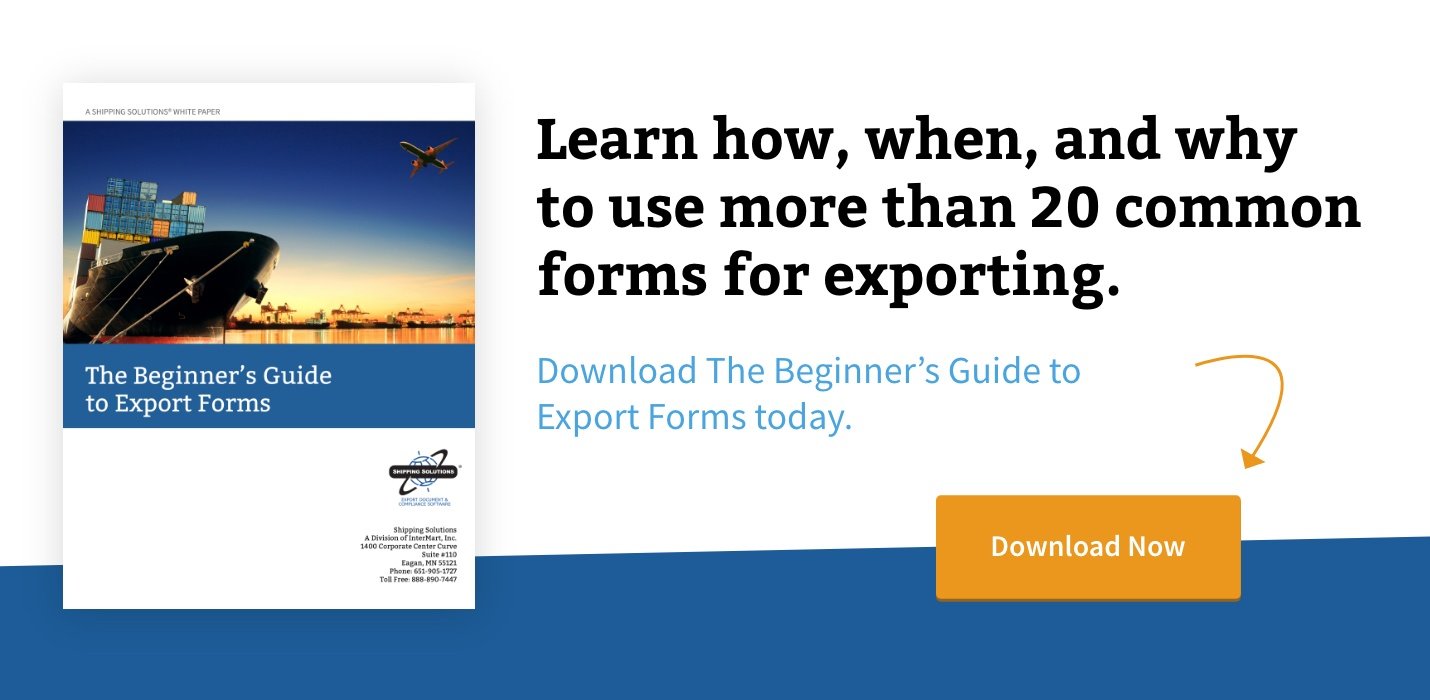The International Trade Blog International Sales & Marketing
Slow Export Delivery Wreaks Havoc
On: November 12, 2018 | By:  Roberto Bergami |
6 min. read
Roberto Bergami |
6 min. read
 One of the critical issues involved in the international trade in goods is the timely movement of cargo across international boundaries. This is an important aspect for any business, as time is money.
One of the critical issues involved in the international trade in goods is the timely movement of cargo across international boundaries. This is an important aspect for any business, as time is money.
A slow delivery increases the price of the goods because it decreases stock turns. A slow delivery also means additional costs when running the overall business. For example, what happens if you buy products from a foreign source, and it takes 90 days for the supplies to reach you?
Two questions come to mind:
1. What is the payment period?
2. What is the impact on the physical business resource requirements and cash flows?
The answers to these questions are not easy, as we must consider aspects of the business operations and its financing. More questions and answers need to be provided. The answers are also interrelated as we will see below.
The Payment Period
The payment period offered from a seller to a buyer is commonly referred to as supplier credit. The seller funds the transactions by giving the buyer time to pay. The longer the payment period, the greater the opportunity for cash flows. The buyer receives the stock from the foreign supplier and sells this on the domestic market on less generous terms than the seller offers, thereby getting payment from domestic customers before they must pay the foreign supplier.
This way the seller funds the activities of the buyer through extended credit terms—the seller acts as a bank. The buyer may pay a premium for extended credit terms, but this may be better than seeking a loan from the bank. Of course, the seller has to be comfortable enough to offer extended payment terms to the buyer—a credit risk consideration for the seller. Credit risk and choice of payment methods discussions are beyond the scope of this article.
The cash flow scenario described above will only work well when product flows are efficient. Taking the 90-day product supply example above, a buyer would need to be trading on terms that are probably 150 days to achieve the cash flow and work exclusively on supplier credit. This has been calculated on the basis of 90-days transit, 30 days to sell stock, and 30 days to collect payment from local customers, just in time to pay the supplier. If transit times are shorter, then a quicker payment period will achieve the same result.
The Hidden Cost of Inventory
One of the problems with transit times is they eat into cash flow, but this isn't all. The other big problem is the need to keep larger inventory holdings because supply lines are slower, and buyers don't want to run out of stock for fear that customers will go to the competition instead.
Larger inventories increase the cost of doing business. This is because the more stock you have, the greater the chances of obsolescence, which is easy to imagine with electronic products such as computers and phones. However, other items also have short shelf-lives, such as fashion clothing.
A large inventory is expensive because the stock has to be held somewhere. Does the buyer need a bigger warehouse? Or is the warehouse holding inventor outsourced by a third-party logistics company (3PL), for example? Or are goods stored in a customs controlled warehouse and only imported (entered for home consumption) as required, thus delaying the payment of duties and taxes until orders are in hand? This is another cash flow consideration. Warehousing and the staffing of warehouses is not cheap.
Reducing Transit Times
It's not easy to reduce transit times. In a perfect world we may be able to precisely control delivery times, but we all know we don't live in a perfect world, so how do we estimate delivery periods? Well, it depends on the circumstances.
Consider the Incoterms 2010—the international delivery terms. Although there are 11 terms, it seems that sellers and buyers only use about half of them. Basically, neither sellers nor buyers are interested in becoming involved in export and import customs clearance processes in a foreign country, so the use of EXW (Ex-Works) and DDP (Delivered Duty Paid) are not favored.
The popular terms are FOB (Free on Board), CFR (Cost and Freight), and CIF (Cost Insurance and Freight), but they are for sea carriage only and not suited to container traffic. Also popular are FCA (Free Carrier), CPT (Carriage Paid to), and CIP (Carriage and Insurance Paid To), and these may be used for any mode of transport including multimodal transport.
Under these terms, the seller organizes the movements of the goods and contracts for carriage (this typically even happens when using FOB regardless of what the Incoterms 2010 say). The buyer is advised of transport details and projects the estimated arrival date of the vessel.
But what happens when the material arrives at the buyer's shore, and it has to be cleared through customs? How do we estimate the time taken for this critical step? Are there established benchmarks that can be used to estimate the average clearance times? This may be important to identify bottlenecks and delays, and the more often these occur, the more time should be taken to find a solution.
Getting through Customs
One way to get assistance is to look at Time Release Study (TRS) data that is available from customs authorities for imported consignments. Not all countries have this information, but it's available in many countries such as Australia, Japan and the United States. Actually, TRS is attributed to initiatives from Japan and the U.S. from the early 1990s. The TRS is one of the most important trade facilitation tools.
Customs authorities measure the time taken to release goods from their control from the time of arrival. The data is released so that each stage of the customs clearance process can be analyzed. Usually this measurement is expressed in number of days. Data from the TRS should be able to identify problematic issues.
For example, in a recent TRS in Australia, there was a significant proportion of consignments that were delayed because customs formalities could not be completed. These formalities related to the lodgement and processing of an entry. More than likely the deficiencies were documentary, that is, the supplier neglected to provide certain information or documentation to allow the prompt and efficient discharge of the goods from customs control.
Once the buyer can determine the average border control processing time, a comparison can be made against the actual delivery time of the goods post arrival. For example, if the average customs clearance times are three days and the buyer only receives consignments five days later, the buyer would be entitled to ask, "Why the delay?" Is the service provider performing at a less than desirable level? Or was the consignment really held up in the process, maybe for a good reason?
The buyer should simply not accept or be happy with, "Oh look, you know what Customs is like." There should be no room for the blame game in your business. Consignments should reach the buyer more or less in accordance with the general average. If they don't you should investigate the reasons and take action.
If documentation is the problem, the solution may simply be to tell the supplier what's required ahead of shipping. But, if the problem lies on the domestic side, then you should review your service providers.
Buyers should familiarize themselves with the TRS data and develop and monitor service level agreements with barrier clearance service providers to ensure that product transfer times are as lean as possible and that inventories are kept to a minimum. These steps will reduce inventory holding costs and stock obsolescence, which will result in lower costs and a profit increase.
This post was originally published in June 2010 and has been updated to include current information, links and formatting.

About the Author: Roberto Bergami
A full time member of staff at Victoria University, Melbourne, Australia, since 1998, Roberto holds a PhD (Thesis title Risk Management in Australian Manufacturing Exports: the Case of Letter of Credit to ASEAN), a Master in Education and Master of Business by Research (Applied Economics). Roberto additionally holds the Certified Documentary Credit Specialist qualification.
He is currently a Senior Lecturer in the College of Business and Visiting Professor at the University of South Bohemia in Ceske Budejovice, the Czech Republic. Roberto is also an Associate Researcher of the Centre for Cultural Diversity and Wellbeing and the Centre for Strategic and Economic Studies. Roberto has maintained his involvement with industry through a number of peak associations where he enjoys various grades of senior level membership.
Roberto’s main areas of research interests in international trade focus on government regulations, delivery terms (Incoterms), international payment terms and market entry barriers. His other research interests include the development of communities of practice, online teaching and online communities, migration from Emilia-Romagna (Italy) to Australia and teenage/youth dialect.





